ion
-
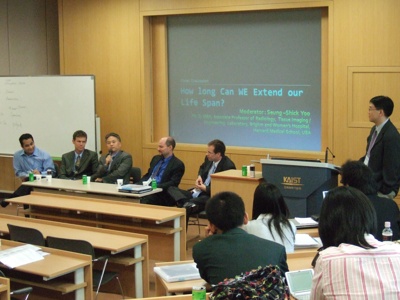 Int'l Conference for Integration of Science & Technology into Society Opens
The 2008 International Conference for the Integration of Science and Technology into Society (ICISTS-KAIST) opened a four-day meeting on Tuesday (July 15) at Daejeon KAIST campus. The conference is an annual event organized by a group of KAIST undergraduate students.
The fifth-year gathering is designed to provide participants with an opportunity to broaden their scientific perspectives by sharing ideas and experiences in related topics, as well as building an international human network. This year"s event has drawn about 200 students from 40 countries.
The centerpiece of the conference is three workshops on the following themes; Human-Robot Symbiotic Society, Neo-brain Science and Trafficmatics. Myung-Ja Kim, former Korean Environment Minister, will appear as a keynote speaker.
In the workshop sessions, two speakers will discuss specific issues and arrive at a tentative conclusion. Participants will have the opportunity to participate in the debate through Q&A for each session.
The first theme "Human-Robot Symbiotic Society" delves into the current trend that robot is being transformed into a perceivable and touchable concept from an abstract one. Guests for the workship include June-Ho Oh, professor at the Department of Mechanical Engineering, KAIST; James Dater, professor at the Department of Political Science, University of Hawaii at Manoa, and Director of the Hawaii Research Center for Future; Michael Pollitt, CEO of Shadow Robot Company; and Steven Dubowsky, professor at the Department of Mechanical Engineering, MIT.
The second theme "Neo-Brain Science" focuses on attempts to shed light on brain from diverse perspectives including psychology, economics and art. Among invited speakers are Prof. Jai-Seung Jung at the Department of Bio and Brain Engineering, KAIST; Prof. Un-Jung Kang at the University of Chicago Medical Center; and Peter Geyer, a consultant for the Association for Psychological Type.
The third workshop on "Traffimatics" will deal with "intelligent transport systems (ITS)" which will discusst new paradigm in transportation policy and traffic engineering. On the list of speakers are Assaf Biderman, assistant director, SENSEable City Laboratory, MIT; Prof. Richard Tay, at the Department of Civil Engineering, University of Calgary; Prof. Shoshi Mizokami at Kumamoto University; and Ho-Jong Baik, research associate professor of Virginia Tech.
2008.07.16 View 22563
Int'l Conference for Integration of Science & Technology into Society Opens
The 2008 International Conference for the Integration of Science and Technology into Society (ICISTS-KAIST) opened a four-day meeting on Tuesday (July 15) at Daejeon KAIST campus. The conference is an annual event organized by a group of KAIST undergraduate students.
The fifth-year gathering is designed to provide participants with an opportunity to broaden their scientific perspectives by sharing ideas and experiences in related topics, as well as building an international human network. This year"s event has drawn about 200 students from 40 countries.
The centerpiece of the conference is three workshops on the following themes; Human-Robot Symbiotic Society, Neo-brain Science and Trafficmatics. Myung-Ja Kim, former Korean Environment Minister, will appear as a keynote speaker.
In the workshop sessions, two speakers will discuss specific issues and arrive at a tentative conclusion. Participants will have the opportunity to participate in the debate through Q&A for each session.
The first theme "Human-Robot Symbiotic Society" delves into the current trend that robot is being transformed into a perceivable and touchable concept from an abstract one. Guests for the workship include June-Ho Oh, professor at the Department of Mechanical Engineering, KAIST; James Dater, professor at the Department of Political Science, University of Hawaii at Manoa, and Director of the Hawaii Research Center for Future; Michael Pollitt, CEO of Shadow Robot Company; and Steven Dubowsky, professor at the Department of Mechanical Engineering, MIT.
The second theme "Neo-Brain Science" focuses on attempts to shed light on brain from diverse perspectives including psychology, economics and art. Among invited speakers are Prof. Jai-Seung Jung at the Department of Bio and Brain Engineering, KAIST; Prof. Un-Jung Kang at the University of Chicago Medical Center; and Peter Geyer, a consultant for the Association for Psychological Type.
The third workshop on "Traffimatics" will deal with "intelligent transport systems (ITS)" which will discusst new paradigm in transportation policy and traffic engineering. On the list of speakers are Assaf Biderman, assistant director, SENSEable City Laboratory, MIT; Prof. Richard Tay, at the Department of Civil Engineering, University of Calgary; Prof. Shoshi Mizokami at Kumamoto University; and Ho-Jong Baik, research associate professor of Virginia Tech.
2008.07.16 View 22563 -
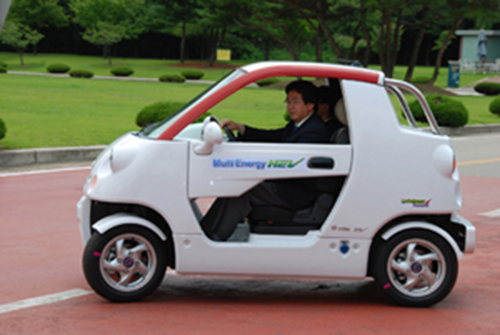 KAIST, CT&T Develop Multi-Energy Hybrid Electric Car
KAIST exchanged a memorandum of understanding for the development and production of a multi-energy plug-in hybrid electric car (ME-PHEV) with CT&T, an electric car maker, on Monday (June 30).
The ME-PHEV is a new vehicle model incorporating a small electric generator and solar energy as power source with conventional plug-in hybrid electric vehicle with rechargeable batteries. The new vehicle has been jointly developed by a research team led by Profs. Soon-Heung Chang and Yong-Hoon Chung, at the department of nuclear and quantum engineering, KAIST, and CT&T.
The ME-PHEV features an increased mileage, improved battery durability and better passenger convenience compared to conventional hybrid vehicles. The joint developers have applied for domestic and international patents.
Prior to the MOU signing ceremony, Prof. Chang, who is also a vice president of KAIST, had a trial ride of the vehicle for the media at the KAIST campus.
"Major car makers of the world currently focus on developing hybrid electric vehicles with battery and internal combustion engine. Compared to these cars, the ME-PHEV offers advantage in terms of reduced air pollution and lowered production costs," said Prof. Chang.
Under the agreement, CT&T will put the features of ME-PHEV into e-Zone, the company"s city-class, low-speed electric vehicle model, with a schedule go into commercial production of the car next year.
2008.07.02 View 17535
KAIST, CT&T Develop Multi-Energy Hybrid Electric Car
KAIST exchanged a memorandum of understanding for the development and production of a multi-energy plug-in hybrid electric car (ME-PHEV) with CT&T, an electric car maker, on Monday (June 30).
The ME-PHEV is a new vehicle model incorporating a small electric generator and solar energy as power source with conventional plug-in hybrid electric vehicle with rechargeable batteries. The new vehicle has been jointly developed by a research team led by Profs. Soon-Heung Chang and Yong-Hoon Chung, at the department of nuclear and quantum engineering, KAIST, and CT&T.
The ME-PHEV features an increased mileage, improved battery durability and better passenger convenience compared to conventional hybrid vehicles. The joint developers have applied for domestic and international patents.
Prior to the MOU signing ceremony, Prof. Chang, who is also a vice president of KAIST, had a trial ride of the vehicle for the media at the KAIST campus.
"Major car makers of the world currently focus on developing hybrid electric vehicles with battery and internal combustion engine. Compared to these cars, the ME-PHEV offers advantage in terms of reduced air pollution and lowered production costs," said Prof. Chang.
Under the agreement, CT&T will put the features of ME-PHEV into e-Zone, the company"s city-class, low-speed electric vehicle model, with a schedule go into commercial production of the car next year.
2008.07.02 View 17535 -
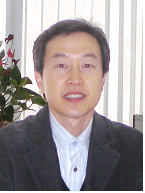 Super-Fast Internet Data Chip Developed
A KAIST research team led by Prof. Kyoung-Hoon Yang of the Electrical Engineering & Computer Science Department developed a super-fast chip that could lead to huge advancements in broadband Internet technology, the Korean Ministry of Education, Science and Technology said on Thursday (June 26).
The multiplexer chip is the first of its kind to be developed using the quantum effect of resonant tunnelling diode, according to the Ministry.
The integrated circuit chip built at the university laboratory has an operating speed of 45 gigabits per second (Gb/s), while using roughly 75 percent less energy than the previous version. The speed enables the transfer of about 4 full-length movies in one second.
The best operational broadband Internet services provide users with data transfer speed of 40 Gb/s, while most other high-speed online connections offer 10 Gb/s.
"Besides speed, the greatest achievement is low energy use," Prof. Yang said. He stressed that energy use in chips is a crucial factor because power creates heat that can melt circuits and make them inoperable.
"By cutting down on energy use, the new chips can be made smaller and with faster data transfer speed," the scientist said.
He added that efforts are underway to increase operational speed to 100 Gb/s, with energy consumption to be cut to 10 percent of current chips like the high electron mobility transistor, the heterojunction bipolar transistor and the complementary metal oxide semiconductor.
The researcher speculated that such revolutionary chips could be developed in 1-2 years and become the new benchmark in this field since existing chips have limited development capabilities.
The project has received funding from the Education-Science-Technology Ministry since 2000. The Ministry"s financial support will last until 2010.
2008.06.26 View 14982
Super-Fast Internet Data Chip Developed
A KAIST research team led by Prof. Kyoung-Hoon Yang of the Electrical Engineering & Computer Science Department developed a super-fast chip that could lead to huge advancements in broadband Internet technology, the Korean Ministry of Education, Science and Technology said on Thursday (June 26).
The multiplexer chip is the first of its kind to be developed using the quantum effect of resonant tunnelling diode, according to the Ministry.
The integrated circuit chip built at the university laboratory has an operating speed of 45 gigabits per second (Gb/s), while using roughly 75 percent less energy than the previous version. The speed enables the transfer of about 4 full-length movies in one second.
The best operational broadband Internet services provide users with data transfer speed of 40 Gb/s, while most other high-speed online connections offer 10 Gb/s.
"Besides speed, the greatest achievement is low energy use," Prof. Yang said. He stressed that energy use in chips is a crucial factor because power creates heat that can melt circuits and make them inoperable.
"By cutting down on energy use, the new chips can be made smaller and with faster data transfer speed," the scientist said.
He added that efforts are underway to increase operational speed to 100 Gb/s, with energy consumption to be cut to 10 percent of current chips like the high electron mobility transistor, the heterojunction bipolar transistor and the complementary metal oxide semiconductor.
The researcher speculated that such revolutionary chips could be developed in 1-2 years and become the new benchmark in this field since existing chips have limited development capabilities.
The project has received funding from the Education-Science-Technology Ministry since 2000. The Ministry"s financial support will last until 2010.
2008.06.26 View 14982 -
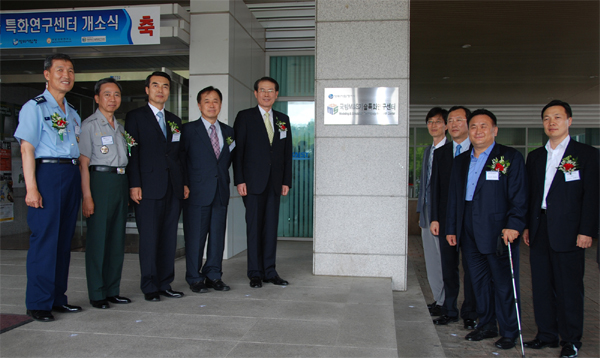 KAIST Opens M&S Technology Research Center
KAIST held an opening ceremony for a new defense research center focusing on modelling & simulation located at its main campus in Daejeon on Thursday (June 19).
The opening of the M&S Technology Research Center is aimed at developing technologies and processes to test, practice and operate newly-developed precision and micro weapons systems in virtual space. The center will be supported by two state-run defense agencies, the Defense Acquisition Program Administration and the Korean Agency for Defense Development.
The new research center is expected to receive a total of 11.5 billion won (US$11.2 million) research grants from the state for the next eight years until 2016. The center will be involved in the development of sophisticated, complex and inter-related weapons system and training research personnel in the specialized area.
The research center will undertake a total of 21 specific projects in collaboration with seven other universities in Korea. Also joining the projects are such overseas institutions as Georgia Institute of Technology and the U.S. Naval Post-Graduate School, and private defense solution providers including Posdata, Samsung Thales and LIG Nex 1.
The opening of the research center comes at a time when modelling and simulation gain growing importance as today"s armies employ more sophisticated, complex and inter-related. weapons systems and equipment than ever before.
Tae-Uk Lee, director of the research center said: "The opening of the center will spur development of operational technologies of precision and micro weapons system on our own, departing from dependence on advanced countries."
2008.06.19 View 19101
KAIST Opens M&S Technology Research Center
KAIST held an opening ceremony for a new defense research center focusing on modelling & simulation located at its main campus in Daejeon on Thursday (June 19).
The opening of the M&S Technology Research Center is aimed at developing technologies and processes to test, practice and operate newly-developed precision and micro weapons systems in virtual space. The center will be supported by two state-run defense agencies, the Defense Acquisition Program Administration and the Korean Agency for Defense Development.
The new research center is expected to receive a total of 11.5 billion won (US$11.2 million) research grants from the state for the next eight years until 2016. The center will be involved in the development of sophisticated, complex and inter-related weapons system and training research personnel in the specialized area.
The research center will undertake a total of 21 specific projects in collaboration with seven other universities in Korea. Also joining the projects are such overseas institutions as Georgia Institute of Technology and the U.S. Naval Post-Graduate School, and private defense solution providers including Posdata, Samsung Thales and LIG Nex 1.
The opening of the research center comes at a time when modelling and simulation gain growing importance as today"s armies employ more sophisticated, complex and inter-related. weapons systems and equipment than ever before.
Tae-Uk Lee, director of the research center said: "The opening of the center will spur development of operational technologies of precision and micro weapons system on our own, departing from dependence on advanced countries."
2008.06.19 View 19101 -
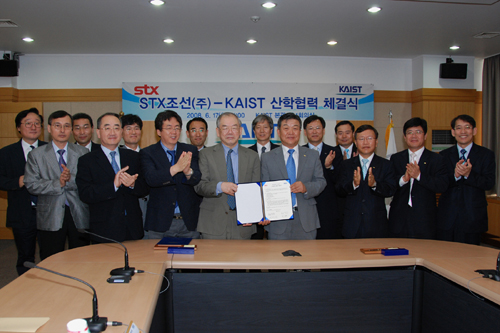 STX Shipbuilding Donates 500 Million won to KAIST
STX Shipbuilding Co, one of Korea"s leading shipbuilders, signed a memorandum of understanding with KAIST to donate 500 million won (about US$480,000) to Korea"s premier research university on Tuesday, June 17.
KAIST President Nam-Pyo Suh and STX Shipbuilding Vice Chairman In-Sung Lee signed the MOU in a ceremony at the KAIST attended by about 20 officials from the university and STX.
STX Shipbuilding donated the sum for the promotion of industrial-academia research projects at KAIST. It will be spent on supporting students" academic activities and scholarships, according to KAIST authorities.
At the signing ceremony, the two institutions also agreed to collaborate in the development of joint research projects and on-the-job training.
2008.06.18 View 13183
STX Shipbuilding Donates 500 Million won to KAIST
STX Shipbuilding Co, one of Korea"s leading shipbuilders, signed a memorandum of understanding with KAIST to donate 500 million won (about US$480,000) to Korea"s premier research university on Tuesday, June 17.
KAIST President Nam-Pyo Suh and STX Shipbuilding Vice Chairman In-Sung Lee signed the MOU in a ceremony at the KAIST attended by about 20 officials from the university and STX.
STX Shipbuilding donated the sum for the promotion of industrial-academia research projects at KAIST. It will be spent on supporting students" academic activities and scholarships, according to KAIST authorities.
At the signing ceremony, the two institutions also agreed to collaborate in the development of joint research projects and on-the-job training.
2008.06.18 View 13183 -
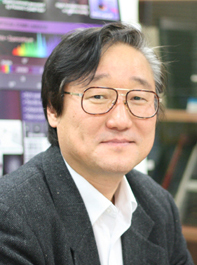 New System to Generate Extreme-Ultraviolet Light Developed
A KAIST research team led by Prof. Seung-Woo Kim of the Mechanical Engineering Department developed a new system for generating coherent extreme-ultraviolet (EUV) light, school authorities announced on June 5.
The new system comes in a metallic nano-structure consisting of a two-dimensional array of gold "bow tie" elements on a sapphire plate. The new process was featured in the British journal Nature on June 5.
The properties of coherent EUV light make it a prime candidate for exciting technological applications. But, at present, the equipment needed to generate the short-wavelength light is costly and bulky. The system developed by Prof. Kim"s research team is expected to reduce both cost and bulk.
The new system uses the conventional principle of high-harmonic generation via the interaction of a femtosecond laser pulse with a gas, but adopts the novel concept of amplifying light by way of local plasmon field enhancement, according to the research team.
2008.06.10 View 15456
New System to Generate Extreme-Ultraviolet Light Developed
A KAIST research team led by Prof. Seung-Woo Kim of the Mechanical Engineering Department developed a new system for generating coherent extreme-ultraviolet (EUV) light, school authorities announced on June 5.
The new system comes in a metallic nano-structure consisting of a two-dimensional array of gold "bow tie" elements on a sapphire plate. The new process was featured in the British journal Nature on June 5.
The properties of coherent EUV light make it a prime candidate for exciting technological applications. But, at present, the equipment needed to generate the short-wavelength light is costly and bulky. The system developed by Prof. Kim"s research team is expected to reduce both cost and bulk.
The new system uses the conventional principle of high-harmonic generation via the interaction of a femtosecond laser pulse with a gas, but adopts the novel concept of amplifying light by way of local plasmon field enhancement, according to the research team.
2008.06.10 View 15456 -
 Actress Han Makes Donation to KAIST
Actress and movie star Han Eunjung donated 100 million won ($98,000) to KAIST to help Korea"s prestigious research-oriented university continue its academic development on Wednesday (June 4).
In a donation ceremony held at the KAIST President"s office, she signed an agreement for donation.
Han said that she came to realize the importance of science and technology while filming a new movie based on a 15th century Joseon Dynasty episode featuring the development of a rocket-like firearm called "Singijeon." The blockbuster movie will be released in early August.
She also said that she was impressed by the first Korean astronaut So-Yeon Lee who took her undergraduate, master"s and doctorate degrees at KAIST, and decided to make a contribution to the school.
"I hope that I would be of any help in the development of KAIST in becoming one of the top research universities in the world," she said.
Han has been cast for the MBC drama "Lawyers of Korea" which will be aired starting from July.
2008.06.05 View 12819
Actress Han Makes Donation to KAIST
Actress and movie star Han Eunjung donated 100 million won ($98,000) to KAIST to help Korea"s prestigious research-oriented university continue its academic development on Wednesday (June 4).
In a donation ceremony held at the KAIST President"s office, she signed an agreement for donation.
Han said that she came to realize the importance of science and technology while filming a new movie based on a 15th century Joseon Dynasty episode featuring the development of a rocket-like firearm called "Singijeon." The blockbuster movie will be released in early August.
She also said that she was impressed by the first Korean astronaut So-Yeon Lee who took her undergraduate, master"s and doctorate degrees at KAIST, and decided to make a contribution to the school.
"I hope that I would be of any help in the development of KAIST in becoming one of the top research universities in the world," she said.
Han has been cast for the MBC drama "Lawyers of Korea" which will be aired starting from July.
2008.06.05 View 12819 -
 KAIST, ICU Agree to Merge
KAIST and the Information and Communications University, a state-run institution, decided to merge as they signed a memorandum of understanding for unification at the Westin Chosun Hotel in Seoul on May 23.
The MOU signing ceremony was attended by representatives of the two universities and related high-ranking government officials from the Ministry of Knowledge Economy and the Ministry of Education, Science and Technology.
Under the agreement, the two universities will form a joint committee to complete the merger process by the end of this year. According to the MOU, ICU will become the "IT Convergence Campus" (ICC) which will include KAIST"s IT related departments and research institutes. The projected ICC will be headed by a KAIST vice president, KAIST authorities said.
With the merger, the number of KAIST students in the IT area will increase to 2,850 from 1,951, while the number of IT-related faculty members will rise to 157 from 99.
ICU was established in 1997 by the Korean Ministry of Information and Communication, the Electronics and Telecommunications Research Institute, and some major Korean IT companies. Located in Daedeok Science Town in Daejeon where KAIST is also situated, ICU started as a graduate school and added the undergraduate course in 2002. It currently has a total enrollment of 1,121 students -- 481undergraduate students, 324 graduate students and 316 doctorate students.
KAIST said that it will treat ICU professors and staff equally after the merger. This year, the two universities will separately conduct freshmen recruitment procedures for 2009, but will then unify recruitment.
The unification of the two institutions is expected to give KAIST the competitive edge through a larger faculty, student body, and expanded facilities.
The agreement put an end to extended negotiations for merger which started in July 2006. The talk of merging the two universities surfaced when the Board of Audit and Inspection concluded that the government"s direct financial support for ICU was unlawful as ICU was established as a private school. When ICU was established in 1997, the Ministry of Information and Communication provided 200 billion won as the basic endowment and has continually provided 10 billion won in operating funds each year.
2008.05.22 View 16316
KAIST, ICU Agree to Merge
KAIST and the Information and Communications University, a state-run institution, decided to merge as they signed a memorandum of understanding for unification at the Westin Chosun Hotel in Seoul on May 23.
The MOU signing ceremony was attended by representatives of the two universities and related high-ranking government officials from the Ministry of Knowledge Economy and the Ministry of Education, Science and Technology.
Under the agreement, the two universities will form a joint committee to complete the merger process by the end of this year. According to the MOU, ICU will become the "IT Convergence Campus" (ICC) which will include KAIST"s IT related departments and research institutes. The projected ICC will be headed by a KAIST vice president, KAIST authorities said.
With the merger, the number of KAIST students in the IT area will increase to 2,850 from 1,951, while the number of IT-related faculty members will rise to 157 from 99.
ICU was established in 1997 by the Korean Ministry of Information and Communication, the Electronics and Telecommunications Research Institute, and some major Korean IT companies. Located in Daedeok Science Town in Daejeon where KAIST is also situated, ICU started as a graduate school and added the undergraduate course in 2002. It currently has a total enrollment of 1,121 students -- 481undergraduate students, 324 graduate students and 316 doctorate students.
KAIST said that it will treat ICU professors and staff equally after the merger. This year, the two universities will separately conduct freshmen recruitment procedures for 2009, but will then unify recruitment.
The unification of the two institutions is expected to give KAIST the competitive edge through a larger faculty, student body, and expanded facilities.
The agreement put an end to extended negotiations for merger which started in July 2006. The talk of merging the two universities surfaced when the Board of Audit and Inspection concluded that the government"s direct financial support for ICU was unlawful as ICU was established as a private school. When ICU was established in 1997, the Ministry of Information and Communication provided 200 billion won as the basic endowment and has continually provided 10 billion won in operating funds each year.
2008.05.22 View 16316 -
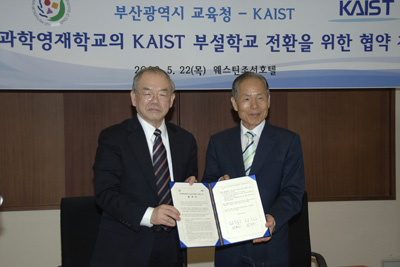 Korea Science Academy to Be Affiliated with KAIST
The Korea Science Academy, a state-run science high school located in the southeastern port city of Busan, will be converted to an affiliated school of KAIST as of March 1, 2009, university authorities said on Thursday (May 22).
The memorandum of understanding for the switchover was signed by KAIST President Nam-Pyo Suh, Dong-Geun Seol, superintendent of the Busan Metropolitan City and Jang-Hyuk Kwon, principal of the Korea Science Academy, at Seoul"s Westin Chosun Hotel Thursday morning.
When the switchover comes into effect, the principal of the high school will be appointed by the president of KAIST. Administrative details will be decided by a working-level committee consisting of delegates from the KAIST, the Office of Education of the Busan Metropolitan City and the Korea Science Academy.
The Korea Science Academy was established in 1991 to provide strengthened science courses for gifted students to prepare them for careers in science and technology. The school currently has an enrollment of 428 students and 45 classroom teachers.
2008.05.22 View 14889
Korea Science Academy to Be Affiliated with KAIST
The Korea Science Academy, a state-run science high school located in the southeastern port city of Busan, will be converted to an affiliated school of KAIST as of March 1, 2009, university authorities said on Thursday (May 22).
The memorandum of understanding for the switchover was signed by KAIST President Nam-Pyo Suh, Dong-Geun Seol, superintendent of the Busan Metropolitan City and Jang-Hyuk Kwon, principal of the Korea Science Academy, at Seoul"s Westin Chosun Hotel Thursday morning.
When the switchover comes into effect, the principal of the high school will be appointed by the president of KAIST. Administrative details will be decided by a working-level committee consisting of delegates from the KAIST, the Office of Education of the Busan Metropolitan City and the Korea Science Academy.
The Korea Science Academy was established in 1991 to provide strengthened science courses for gifted students to prepare them for careers in science and technology. The school currently has an enrollment of 428 students and 45 classroom teachers.
2008.05.22 View 14889 -
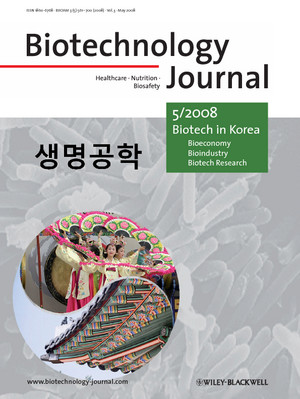 International Science Journal Spotlights Korean Biotechnology
Biotechnology Journal published by German-based Wiley-VCH, one of the world"s major scientific and technical publishers, devoted its entire special edition for May to biotechnology in Korea.
The monthly journal"s special issue was planned by KAIST Professor Sang-Yup Lee of the Chemical and Biomolecular Engineering Department who is one of the journal"s two editors-in-chief.
The special issue outlines the current status and future prospect of biotechnology in Korea, and presents five review papers and eight original papers by leading Korean biotech researchers to showcase recent developments in Korean biotechnology. Among these papers, a review by Dr. Byung-Hwan Hyeon and his colleagues describes in detail the Korean biotechnology strategies represented by "Bio-Vision 2016," and another by Dr. Ji-Hyun Kim and his collaborators presents recent progress in microbial genome projects in Korea.
In the editorial of the journal, Prof. Lee said, "Heavy industry and IT industry have been the two drivers of Korean economic growth. Korea is now considering biotechnology as its next generation growth engine."
Underscoring the growing importance of fusion research, he mentioned that integration of biotechnology with information technology and nanotechnology is advancing rapidly in Korea. Another special edition of Biotechnology Journal focusing on these exciting biotech developments in Korea is planned for the future.
2008.05.20 View 16473
International Science Journal Spotlights Korean Biotechnology
Biotechnology Journal published by German-based Wiley-VCH, one of the world"s major scientific and technical publishers, devoted its entire special edition for May to biotechnology in Korea.
The monthly journal"s special issue was planned by KAIST Professor Sang-Yup Lee of the Chemical and Biomolecular Engineering Department who is one of the journal"s two editors-in-chief.
The special issue outlines the current status and future prospect of biotechnology in Korea, and presents five review papers and eight original papers by leading Korean biotech researchers to showcase recent developments in Korean biotechnology. Among these papers, a review by Dr. Byung-Hwan Hyeon and his colleagues describes in detail the Korean biotechnology strategies represented by "Bio-Vision 2016," and another by Dr. Ji-Hyun Kim and his collaborators presents recent progress in microbial genome projects in Korea.
In the editorial of the journal, Prof. Lee said, "Heavy industry and IT industry have been the two drivers of Korean economic growth. Korea is now considering biotechnology as its next generation growth engine."
Underscoring the growing importance of fusion research, he mentioned that integration of biotechnology with information technology and nanotechnology is advancing rapidly in Korea. Another special edition of Biotechnology Journal focusing on these exciting biotech developments in Korea is planned for the future.
2008.05.20 View 16473 -
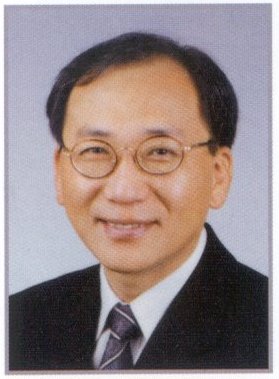 World Micromachine Summit to Open in Daejeon
The 2008 World Micromachine Summit will be held at Hotel Riviera in Daejeon for a four-day run from April 30, drawing worldwide industrial and academic leaders in the micro-nano-technology (MNT).
Organizers say that 76 delegates and 56 observers from 19 countries and regions will take part in this year"s Micromachine Summit. Prof. Cho Young-ho of the Department of Bio & Brain Engineering of KAIST will play host to the annual event.
Participants will discuss the progress of micro-nano-technology in each country and region development of national policies in this area. The Summit was first organized in 1995 by the Micromachine Center of Japan with representatives from 10 countries participating. They were Australia, Canada, Germany, Italy, Japan, the Netherlands, Switzerland, the United Kingdom, and the United States.
Korea was first invited to the conference in 1999. Since then, Korea has played an active role in promoting technological exchanges among nations and has conducted presentations and discussions on major technological breakthroughs.
During the four-day run, each delegation will outline their country"s policies and strategies and present local features on focused areas including this year"s main theme, "Micromachine towards Technology Convergence Era."
The gathering will offer a valuable opportunity for the participants to exchange and collect information on the current state of the MNT, as well as providing a forum for worldwide networking of leaders in the area.
2008.04.29 View 15399
World Micromachine Summit to Open in Daejeon
The 2008 World Micromachine Summit will be held at Hotel Riviera in Daejeon for a four-day run from April 30, drawing worldwide industrial and academic leaders in the micro-nano-technology (MNT).
Organizers say that 76 delegates and 56 observers from 19 countries and regions will take part in this year"s Micromachine Summit. Prof. Cho Young-ho of the Department of Bio & Brain Engineering of KAIST will play host to the annual event.
Participants will discuss the progress of micro-nano-technology in each country and region development of national policies in this area. The Summit was first organized in 1995 by the Micromachine Center of Japan with representatives from 10 countries participating. They were Australia, Canada, Germany, Italy, Japan, the Netherlands, Switzerland, the United Kingdom, and the United States.
Korea was first invited to the conference in 1999. Since then, Korea has played an active role in promoting technological exchanges among nations and has conducted presentations and discussions on major technological breakthroughs.
During the four-day run, each delegation will outline their country"s policies and strategies and present local features on focused areas including this year"s main theme, "Micromachine towards Technology Convergence Era."
The gathering will offer a valuable opportunity for the participants to exchange and collect information on the current state of the MNT, as well as providing a forum for worldwide networking of leaders in the area.
2008.04.29 View 15399 -
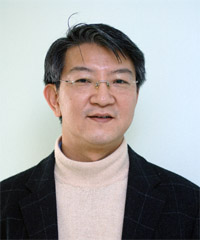 Prof. Sang-Yup Lee Co-Editor-in-Chief of Biotechnology Journal
Prof. Sang-Yup Lee of KAIST"s Department of Chemical and Biomolecular Engineering has been appointed as co-editor-in-chief of Biotechnology Journal published by Wiley-VCH, a German-based leading technical publisher, university authorities said Tuesday, April 15.
Launched in January 2006, Biotechnology Journal has covered biological process, brain ailments, biological medicine, protein design and other applied bio-sciences.
Starting in May, Lee will be responsible for setting and overseeing editorial direction of the journal along with Prof. Alois Jungbauer of Austria.
Professor Lee has been gaining recognition in and outside the country for his research on metabolic engineering. In 2002, he was chosen as one of Asia"s next generation leaders by the World Economic Forum. In 2007, Lee was elected a fellow of the American Association for the Advancement of Science, the world"s largest general scientific society. He is also serving as an editorial member of more than ten international journals including Biotechnology & Bioengineering.
Awards and honors include the First Young Scientist"s Award from the President of Korea, the Scientist of the Month Award from the Korean Ministry of Science and Technology, the Best Patent Award from Korean Intellectual Property Office, the Citation Classic Award from ISI, USA, and the First Elmer Gaden Award (1999 Best Paper Award) from Biotechnology and Bioengineering (John Wiley & Sons, USA) at the ACS National meeting.
2008.04.16 View 15660
Prof. Sang-Yup Lee Co-Editor-in-Chief of Biotechnology Journal
Prof. Sang-Yup Lee of KAIST"s Department of Chemical and Biomolecular Engineering has been appointed as co-editor-in-chief of Biotechnology Journal published by Wiley-VCH, a German-based leading technical publisher, university authorities said Tuesday, April 15.
Launched in January 2006, Biotechnology Journal has covered biological process, brain ailments, biological medicine, protein design and other applied bio-sciences.
Starting in May, Lee will be responsible for setting and overseeing editorial direction of the journal along with Prof. Alois Jungbauer of Austria.
Professor Lee has been gaining recognition in and outside the country for his research on metabolic engineering. In 2002, he was chosen as one of Asia"s next generation leaders by the World Economic Forum. In 2007, Lee was elected a fellow of the American Association for the Advancement of Science, the world"s largest general scientific society. He is also serving as an editorial member of more than ten international journals including Biotechnology & Bioengineering.
Awards and honors include the First Young Scientist"s Award from the President of Korea, the Scientist of the Month Award from the Korean Ministry of Science and Technology, the Best Patent Award from Korean Intellectual Property Office, the Citation Classic Award from ISI, USA, and the First Elmer Gaden Award (1999 Best Paper Award) from Biotechnology and Bioengineering (John Wiley & Sons, USA) at the ACS National meeting.
2008.04.16 View 15660